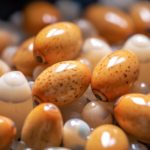Ladybugs, also known as ladybird beetles, have long been considered a symbol of good luck and a gardener’s best friend. But are ladybugs harmless? This comprehensive guide will answer this question and give you an analytical perspective on these charming insects. We will also explore the differences between ladybugs and their closely related cousin, the Asian lady beetle, which has a reputation for being less than friendly.
A Gardener’s Best Friend
Contents
Most species of ladybugs are considered harmless, and they are often welcomed in gardens because they feed on aphids, mealybugs, and other plant pests. They are a natural and eco-friendly alternative to chemical pesticides. In fact, many gardeners intentionally introduce ladybugs to their gardens to control pests and maintain a healthy environment.
Ladybugs vs. Asian Lady Beetles
While ladybugs are generally harmless, their close relatives, the Asian lady beetles, have a different reputation. They can be a nuisance, especially when they invade homes in large numbers. They are also known to bite humans, although the bites are usually mild and not harmful.
So, how can you tell the difference between these two insects?
- Color and markings: Ladybugs are typically red or orange with black spots, while Asian lady beetles can be yellow, orange, or red with varying numbers of spots or no spots at all. They also have a distinctive “M” or “W” shaped marking behind their heads.
- Size: Asian lady beetles are slightly larger than ladybugs, although the size difference may not be easily noticeable.
- Behavior: Ladybugs are generally not aggressive, while Asian lady beetles may bite if they feel threatened.
Do Ladybugs Bite?
Contrary to popular belief, ladybugs can bite, but it’s rare and usually happens when they feel threatened. The bites are mild and not harmful to humans, and most people don’t even feel them. In any case, it’s essential to handle these insects gently to avoid provoking them.
Ladybugs and Ants: A Surprising Relationship
While ladybugs feed primarily on aphids and other soft-bodied insects, they do not typically eat ants. However, ladybugs and ants have a fascinating relationship. Ants often “farm” aphids for their honeydew, a sweet substance produced by the aphids. In this mutually beneficial relationship, ants protect aphids from predators like ladybugs. This means that if you have a large ant population in your garden, it might be challenging to establish a thriving ladybug population as well.
Fun Facts About Ladybugs
Ladybugs are fascinating creatures with some unique characteristics. Here are a few fun facts about these colorful insects:
- There are thousands of species: There are over 5,000 species of ladybugs worldwide, with around 450 species found in North America alone.
- They change color: Ladybugs can change color throughout their lives, usually becoming darker as they age. This change in color is due to the breakdown of pigments in their exoskeleton.
- Ladybugs hibernate: In cold climates, ladybugs hibernate during the winter months, often in large groups. They usually seek shelter in leaf litter, under rocks, or even in human-made structures like houses.
- They have a unique method of self-defense: When threatened, ladybugs can emit a yellowish, foul-smelling liquid called “reflex bleeding” from their leg joints. This substance is a deterrent to predators, as it contains toxins that can cause temporary paralysis or deter them from eating the ladybug. Learn more about how ladybugs protect themselves.
- Ladybugs lay hundreds of eggs: Female ladybugs can lay hundreds of eggs during their lifetime, usually on plants infested with aphids. The eggs hatch into larvae that feed on aphids and other pests before pupating and becoming adult ladybugs.
Attracting Ladybugs to Your Garden
If you’re looking for an eco-friendly way to control pests in your garden, attracting ladybugs is an excellent option. Here are some tips on how to keep ladybugs in your garden:
- Plant flowers that attract ladybugs: Ladybugs are attracted to certain types of flowers, especially those with an umbrella shape like dill, fennel, and cilantro. They are also attracted to flowers with pollen and nectar, such as marigolds, sunflowers, and cosmos.
- Provide a water source: Like all living creatures, ladybugs need water to survive. Consider setting up a shallow dish or birdbath with stones for them to land on while they drink.
- Avoid using chemical pesticides: Chemical pesticides can harm ladybugs and other beneficial insects. Instead, opt for natural pest control methods or organic products that are safe for ladybugs.
- Create a ladybug-friendly habitat: Provide shelter for ladybugs by leaving some leaf litter, logs, or rocks in your garden. This will create a suitable habitat for them to hide and lay their eggs.
Lightning Bugs: Another Beneficial Insect
If you’re interested in other beneficial insects, you might be curious about lightning bugs, also known as fireflies. These bioluminescent beetles are not only enchanting to watch but also play a role in controlling pests. Lightning bugs are predatory insects that eat various small insects, including slugs, snails, and other soft-bodied pests.
Conclusion: Are Ladybugs Harmless?
In conclusion, ladybugs are generally harmless and are beneficial insects for gardeners, as they help control pest populations. While they can bite in rare cases, their bites are mild and not harmful to humans. It’s essential to differentiate between ladybugs and Asian lady beetles, which can be more aggressive and occasionally bite humans.
Frequently Asked Questions
Are ladybugs friendly?
Yes, ladybugs are generally friendly and not aggressive towards humans. They are considered beneficial insects because they help control pests in gardens and are not harmful to plants or people.
Are ladybugs in the house harmful?
Ladybugs in the house are not harmful, but they can be a nuisance if they gather in large numbers. They may seek shelter indoors during the winter months to hibernate. To avoid having ladybugs in your house, seal any cracks or openings and use window screens.
Is it safe to touch a ladybug?
Yes, it is generally safe to touch a ladybug. However, handle them gently and with care, as they may bite if they feel threatened, although their bites are mild and not harmful to humans.
Are ladybugs harmful to humans?
Ladybugs are not harmful to humans. Their bites, which are rare, are mild and not dangerous. They are considered beneficial insects because they help control pests in gardens.
Should I let ladybugs live?
Yes, you should let ladybugs live, especially if you have a garden. Ladybugs are beneficial insects that help control pests like aphids, mealybugs, and other harmful insects that can damage your plants.
What are the negatives of ladybugs?
The main negative of ladybugs is that they can become a nuisance when they gather in large numbers, especially inside homes. However, this is more common with Asian lady beetles than with typical ladybugs.
Is it OK to leave a ladybug in your room?
While it’s not harmful to leave a ladybug in your room, it’s better to release them outside, where they can find food and shelter more easily. If you find ladybugs indoors, try to gently move them outside to a protected area like a plant or tree.
Are orange ladybugs bad?
Orange ladybugs are not necessarily bad, but they might be Asian lady beetles, which are more aggressive and can bite humans. To determine if an orange ladybug is a typical ladybug or an Asian lady beetle, look for the “M” or “W” shaped marking behind their head, which is a distinguishing feature of Asian lady beetles.




